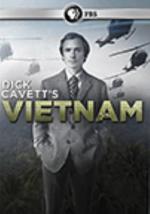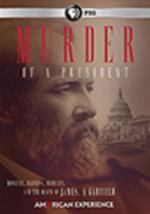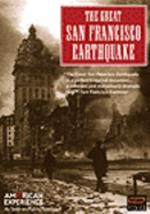June 1, 2016 | SuzyQ
Documents the Vietnam War using footage from the Dick Cavett Show, archival footage and newly filmed interviews.
Recounts the assassination and excruciating final months of President James Garfield's life. A brilliant scholar, courageous general, and fervent abolitionist, Garfield never wanted the job of president. But once in office, he worked tirelessly to reunite a nation still divided 15 years after the Civil War. As he lay dying, the North and South came together to pray for his recovery.
In the early 1900s, San Francisco stood as a proud and flourishing symbol of America's recent conquest of the once-wild West. But on April 19, 1906, the city would experience an awesome reminder of the uncontrollable forces lying dormant just beneath the splendors of its cosmopolitan surface. Thirty times more powerful than the temblor that decimated northern California in 1989, this earthquake measured a ground-wrenching 8.3 on the Richter scale, resulting in the worst catastrophe suffered by a North American city in the twentieth century. Contains rare, newly restored movie footage from the period and the personal accounts of eyewitnesses.
It was the year of the Beatles and the Civil Rights Act, of the Gulf of Tonkin and Barry Goldwater's campaign for the presidency. The year that Americans learned smoking was bad for their health, and Cassius Clay became Mohammed Ali. The year that cities across the country erupted in violence and Americans tried to make sense of the assassination of their president. Based on The Last Innocent Year: America in 1964.
Long before 9/11, a far deadlier, little-known attack from the ocean depths struck our shores, lasting three-and-a-half years and claiming 5,000 lives. Now, famed undersea explorer Bob Ballard, discoverer of the Titanic, investigates the wreck of one attack craft, a German submarine that lies at the bottom of the gulf just a few miles off the coast of New Orleans. U-166 was part of Operation Drumbeat, a highly successful German U-boat operation that caught east coast cities and shipping ports almost completely unprepared.
Investigate the reasons North Carolina, long seen as the most progressive state in the South, became home to the largest Klan organization in the country, with more members than all the other Southern states combined, during the 1960s.
This film draws upon rare archival material and eyewitness accounts to re-create the dramatic tribunal that defines trial procedure for state criminals to this day.
In the final weeks of the Vietnam War, American servicemen and others begin the difficult mission of evacuating as many friends, family members and South Vietnamese collaborators as possible before Saigon falls to the North Vietnamese.
The story of the most powerful and destructive device ever invented. With newly restored footage, go behind the scenes of the first atomic bomb, revealing how it was developed and how it changed the planet. Examine the choices society has made since 1945, and continues to make, to live with an invention that could destroy the planet.
The draught of 1931 brought financial and emotional ruin to thousands of families in the Southern Plains. The Dust Bowl was America's worst ecological disaster.
A look into the hippie revolution of San Francisco during the '60s, and how the free love and music turned into a life of drug use, violence, and broken dreams.
Documents the story of assassin, James Earl Ray, his target, Dr. Martin Luther King, Jr., and the seething, turbulent forces in American society that led these two men to their violent and tragic collision in Memphis in April of 1968. Explores the wildly disparate, yet fatefully entwined stories of Ray and King to create a complex, engaging, and thought-provoking portrait of America in that crisis-laden year.
The story of the war's most concentrated aerial attack on London in 1941 and how the city nearly perished under the German barrage. Approximately 43,000 people died and over 1 million houses were destroyed during the blitz.
Chronicles May 1970, the month in which four students were shot dead at Kent State. The mayhem that followed has been called the most divisive moment in American history since the Civil War.
What began as a broadcast performance of H.G. Wells' fantasy, The War of the Worlds, turned into one of the biggest mass hysteria events in U.S. history. This film examines the elements that together created this frenzy, including our longtime fascination with life on Mars; the emergence of radio as a powerful new medium; and the creative wunderkind Orson Welles, the twenty-three-year-old director of the drama and mischief-maker supreme.
Here is the true story of the U-2. In their own words, crew members describe building and testing the "dirty bird," a spy plane that could soar to the edge of earth's atmosphere. After grueling preparation and fatal failures, the U-2 flew its first mission in 1956. Despite being caught on Russian radar, the U-2 continued its surveillance. But on May 1, 1960, luck ran out. U-2 pilot Francis Gary Powers was shot down and captured while trying to photograph a Russian transcontinental missile base. The notorious "U-2 affair" that followed, shattered the trust between Eisenhower and Soviet Premier Khrushchev.
The first feature-length documentary to explore the Black Panther Party, its significance to the broader American culture, its cultural and political awakening for black people, and the painful lessons wrought when a movement derails.
Examines the role Ohio native William Alexander Morgan played in the 1959 revolution in Cuba.
Chronicles the tale of the pioneer group that set out for California in the spring of 1846 and ended in disaster in the snows of the Sierra Nevada Mountains the following winter.



















